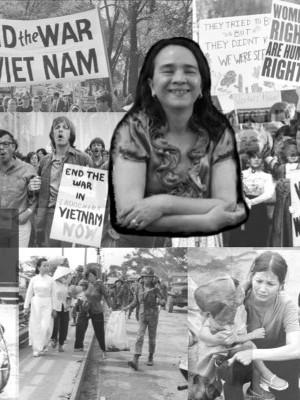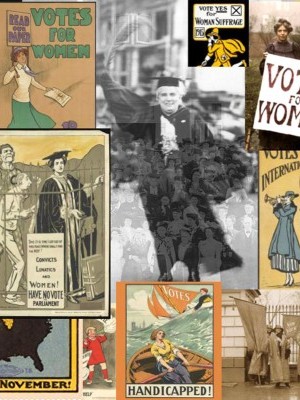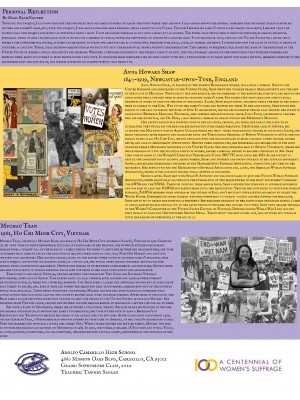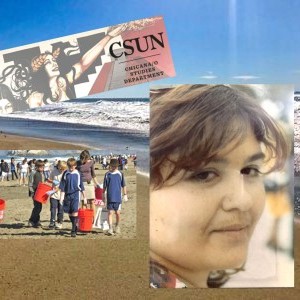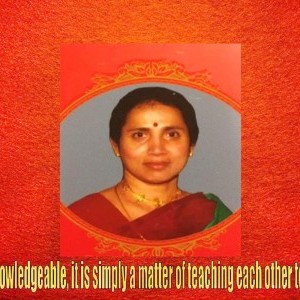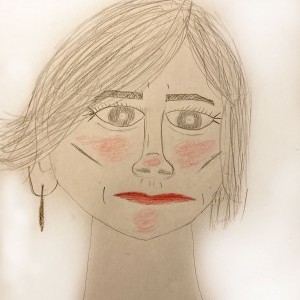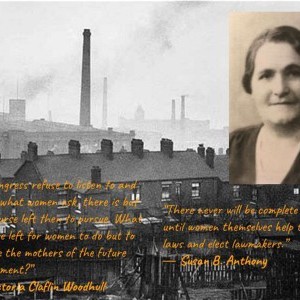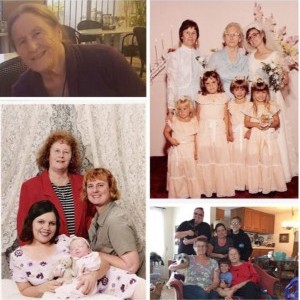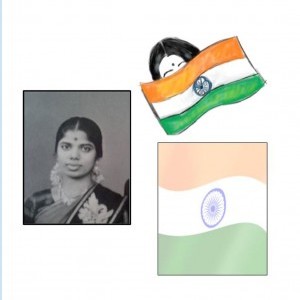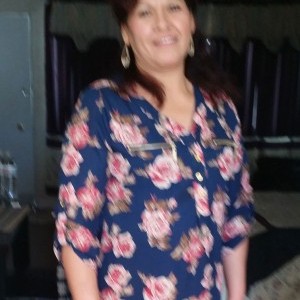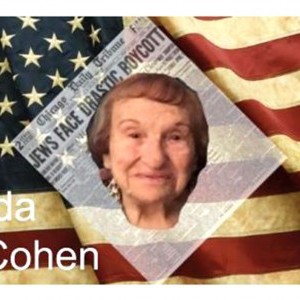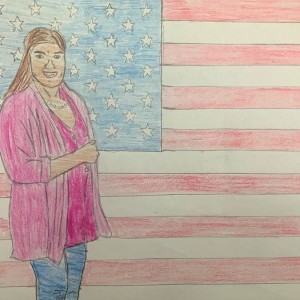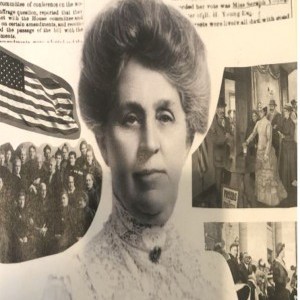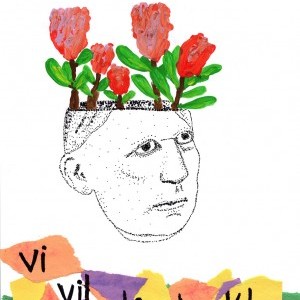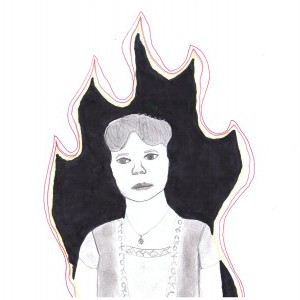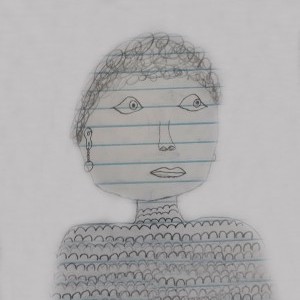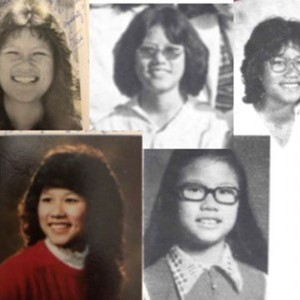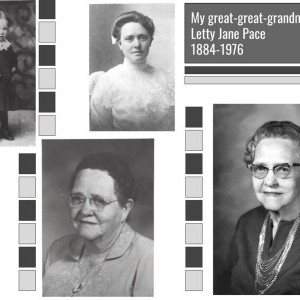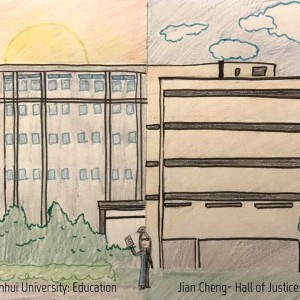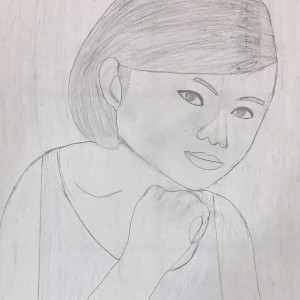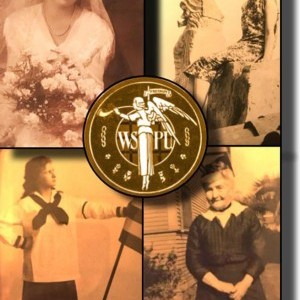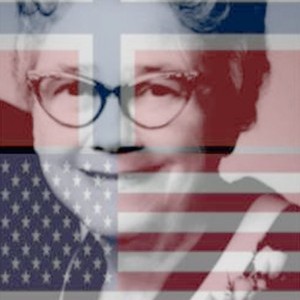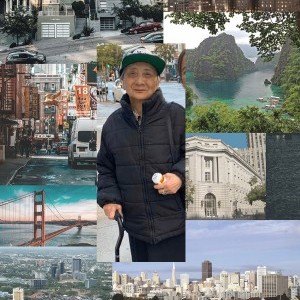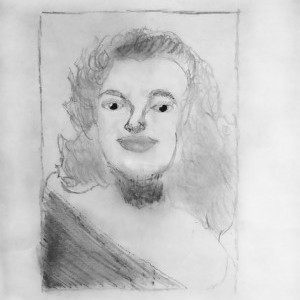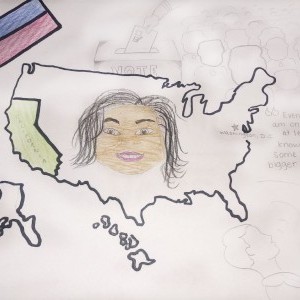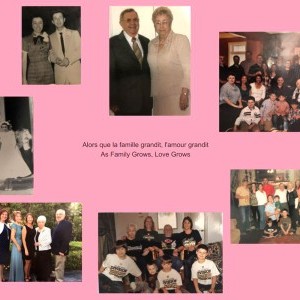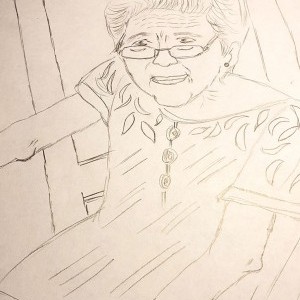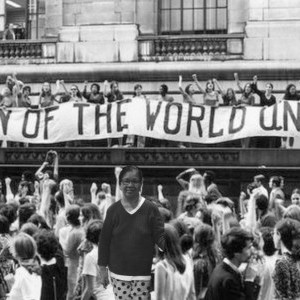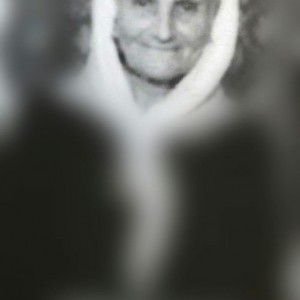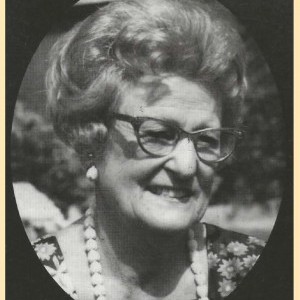Hans Bachnguyen
Adolfo Camarillo High School | Camarillo, CA | 10th
Inspirational Family Member
Mychau Tran, My Aunt
My aunt, Mychau Tran, originally Mychau Bach, was born in Ho Chi Minh City, formerly Saigon, Vietnam in 1961. Growing up, my aunt took on heavy responsibilities such as taking care of her siblings, one of which suffered from brain damage from a violent fall. In order to assist her mother (my grandmother), she took on hobbies that aided in paying the bills such as selling street food in the local Nam Hoa Market and knitting sweaters and accessories. She and her family, living on the rented upper floor of another family’s building, were always subject and witness to domestic abuse; at a young age, she would often see her neighbor beating his wife during their cacophonous arguments. Despite these intertwined commitments and obstacles, Mychau rode her bike for an hour to school everyday and placed in the top ranks in her class throughout her adolescence.
Throughout her life in Vietnam, tension between the communist Viet Cong and Southern Vietnam effloresced, especially in Saigon. This ensued panic in local streets. Both soldiers and radicals were common encounters in public. The Bach family lacked the disposable income for an airplane or boat ticket to escape and even if they did have resources, it was still illegal to leave. Emboldened with hope and promise, Mychau and her relatives patiently conserved what little savings they had until leaving the country became legal when violence subsided. After years of frugality, the Bach family collected funds sufficient enough to send one person to the United States: 19 year-old Mychau.
She departed from Vietnam alone, leaving her mother and five siblings behind to search for a better life for all of them. She took a plane to Minnesota, where she attended a vocational school. Because of her motivation to provide for herself and eventually sponsor her family to immigrate, she took on the path to earn a Bachelor’s in Electronics and Technology because she heard it was an easy field to find jobs. After graduating and finding a job, she met Charles Tran, a Vietnamese man who was eighteen when he first came to America, at her uncle’s celebratory dance. They got married and soon had a little girl named Tina. With a stable income and settled family, Mychau was able to sponsor her siblings and mother to Minnesota in 1989. In 1992, she formally became a US citizen and voted. Today, as a wife, mother, godmother, and grandmother, she exercises her natural rights, empowered by the struggle of her story.
Historical Figure I Admire
Anna Howard Shaw
Anna Howard Shaw, an example of the modern Renaissance woman, was always a tomboy. Born in the United Kingdom, she immigrated to the United States and spent her toddler years in Massachusetts and the rest of her youth in Michigan. Throughout her adolescence, she was immersed in the responsibilities of older men on her rural home while the men were in absentia from her family’s farm. She assimilated many agricultural skills in order to care for the rest of her family. Later, Shaw began teaching school while the men in her family were in combat in the Civil War in order to pay her family’s taxes and provide for them. In her adulthood, Shaw found her passion in the call to preach the word of God. In high school, she was recognized by people that assisted her stride to ordination: Reverend Marianna Thompson, who inspired her educational drive, Lucy Foot, a high school teacher who saw her potential, and Dr. Peck, a man seeking a female to ordain within the Methodist Ministry. Her recent passion was frowned upon by her relatives, friends, and peers and her family held her to an ultimatum: they would pay for her college education if she ceased preaching. Despite her lack of support, she attended the Methodist school Albion College where she spent three years earning income by lecturing.
Later, she began preaching more sermons and graduated from the Theological Seminary at Boston University in 1878 as the only woman in her class. On Cape Cod, she was troubled with the disadvantages of being a woman: lower income, higher rents, and lack of employment opportunity. Despite these difficulties, she persevered and became one of the first ordained female Methodist ministers in the United States. She then reverted back to Boston University, where she, while speaking out for the political rights of women, earned a medical degree to become a physician in 1886. Shaw then rose in ranks in the Women’s Christian Temperance Union (WCTU) soon after her MD.
As she fought to reduce the consumption of alcohol among women, Shaw lost interest and found intrigue in the suffrage movement. Slowly, she became increasingly involved in the Massachusetts Suffrage Association, conducting lectures for her movement. Her efforts within the Massachusetts Suffrage Association and, later, the American Woman Suffrage Association, served as the catalyst for her social growth in influence. Shortly after, Shaw met with Susan B. Anthony and was encouraged to join the Nation Woman Suffrage Association, which eventually allowed for the integration of two major powers in the fight for women’s suffrage: the AWSA and the NWSA. Through unifying these associations, Shaw contributed strength in the suffrage movement and was able to lead the NAWSA for eleven years until her resignation.
Though she continued to strive for women’s suffrage, NAWSA members were inspired by the success of England’s militant suffragettes and began to picket the White House. Experiencing inner turmoil with her opposition to violent tactics, Shaw saw fit to resign her position as president. She remained resilient to her faith in her principles during a time of chaos, exhibiting her dedication to her cause which outweighed her hunger for power. Shaw then became the head of the Women’s Committee of the United States Council of National Defense during World War I and was the first woman to earn the Distinguished Service Medal. Throughout the rest of her life, she lectured for suffrage until her passing of pneumonia at the age of 72.
What the Project Means to Me
Through this project, I can now visualize the struggles that my family endured to reach the point where they are now. I had always known the general problems that my family faced on both my mother and father’s sides, but, with this project, I was able to discover more personal details about my aunt’s past. Though I believe my family’s story is less tragic than most, I believe that the stories conceived by this project can positively impact many. I now recognize suffrage as not only a right but as a power. People are empowered through freedom to make decisions for the greater good.
I now recognize that, though the United States will never truly perfect the governmental system, citizens can be driven to strive for a better life as a community, whether it be local, state, or federal decisions. I understand now the value of voting: it brings us together as a nation. Today, vital decision-making such as voting is put into the hands of all people without discrimination. This absence of prejudice facilitates the basis of the principles of the United States of America today: inclusivity and freedom. Whether a teenager included in this project likes it or not, they will probably assimilate the importance that suffrage possesses and exercise their right to do what so many people fought for: vote. By involving high schoolers like me who cannot vote yet, it encourages us to learn about our family history, immerse ourselves in the knowledge that the past holds, and informs us on current events that impact our lives.
Explore the Archive
More From This Class
Click on the thumbnails below to view each student's work.Deadline Extended
There's still time to join Women Leading the Way.
Become a part of our storytelling archive. Enroll your class today.
Join the Project

